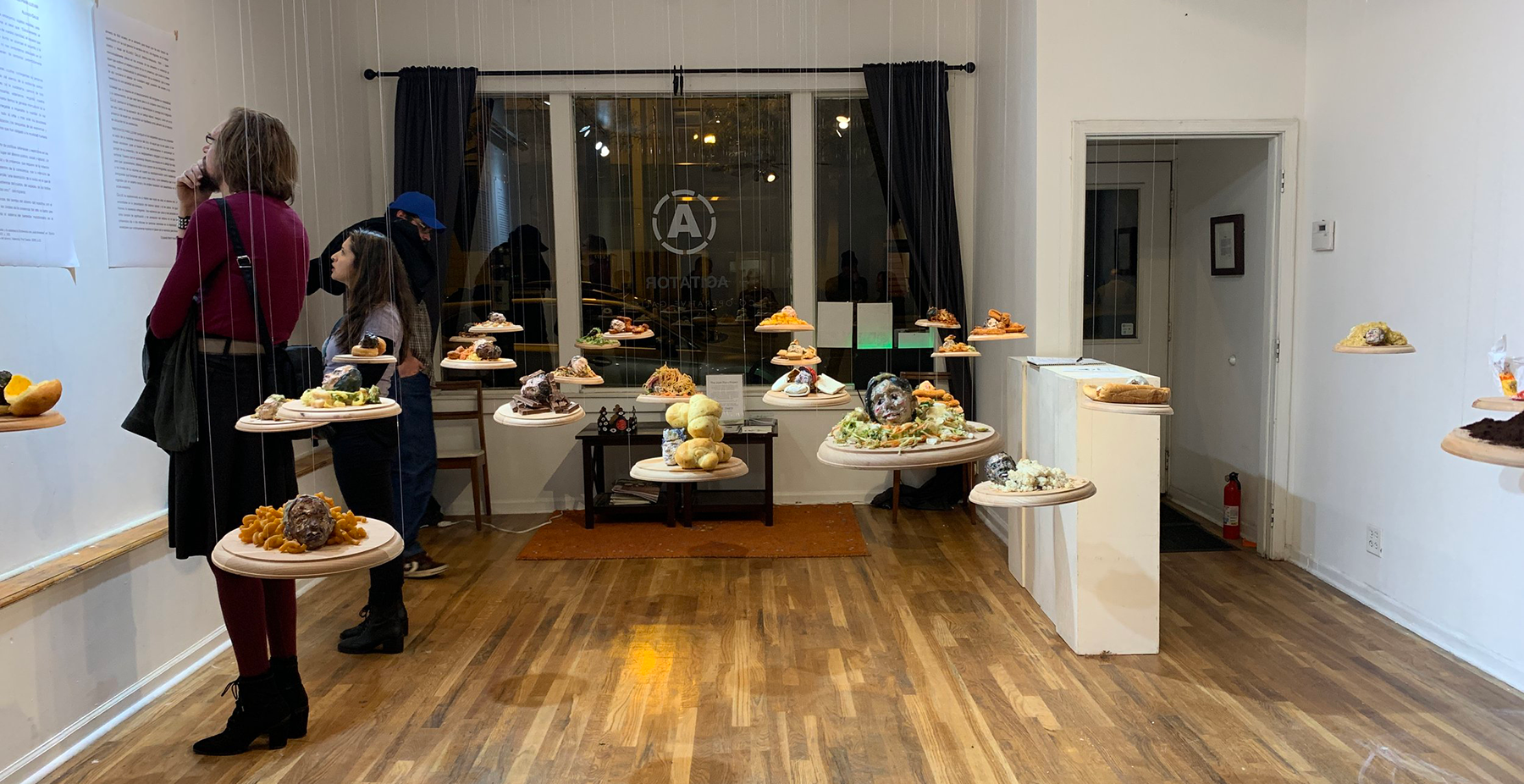Agitator GALLERY’s
ARTISTS SALONs
Group Critique Sessions for Artists
MONTHLY :: evening sessions / 3rd Wednesday, each month
Agitator Artist Salons are organized by Agitator member, Alex Wilson.
Agitator Gallery invites artists to present work to be reviewed & discussed by a group of your peers. Critique sessions meet on the third Wednesday evening every month from 7-9pm. In one evening up to 6 artists will display artworks to others who are invited to observe, analyze and participate in the discussion. Artists will have 15-20 minutes to introduce their work, answer questions and receive feedback. This is a great opportunity to workshop new ideas and get input as you develop existing or new pieces.
Facilitated by Agitator member Alex Wilson. A $10 donation is encouraged from participating artists to help support operating costs of the gallery. Contact Alex at AudioImageChicago@gmail.com to participate. Please include your name, a description of the work you plan to display and jpeg picture files of the work.
Critique Session 1 :: Wednesday, Sept 18, 7 – 9 pm
Critique Session 2 :: Wednesday, Oct 16, 7 – 9 pm
Critique Session 3 :: Wednesday, Nov 20, 7 – 9 pm
Promotional imagery from internet and historical sources >>
Exhibition & Event photos by Luna Rail
Scroll through artwork documentation & event views below.

Above: Agitator Exhibition / Jan 2022—a variety of artworks on display.
Agitator’s Artists Salon / Critique Sessions meet regularly (the third Wednesday of each month) for local artists to share their work and get & give feedback on works in progress, share resources, and generally support each other in developing ideas, drawing & sketching concepts, making and exhibiting 2-D, 3-D and time-based artworks.
Critiques should be rewarding experiences for both re-viewers and the presenting artists. Whether artists are creating original plays, visual artworks, dance pieces, or music compositions, the following tips will help exercise critical thinking muscles and enable you to dig deeper into the art-making and critical evaluative process.
Agitator Gallery’s
CRITIQUE SESSION GUIDELINES:
Outline the game plan before the CRIT begins.
Begin by establishing the criteria for your art critique so participants know exactly what to expect. Decide how you want the critique to flow, and stick to the same basic steps for each work being discussed. One way to organize a critique is to discuss an artwork in four ways, through description, analysis, interpretation, and evaluation.
Think first, share later.
To ensure ample responses from participants, give them time to brainstorm before opening up the floor to discussion. Use the think-pair-share method to generate responses about the work’s successes and weaknesses, allow individuals to write down their interpretations of the work, or present a series of questions that ask participants to evaluate the piece in specific ways (i.e., What are the goals of the artist? Are they being reached? If so, how? If not, why not?).
Generate vocabulary specific to each work.
Art analysis at any level begins with description. If artwork isn’t accurately described, then its interpretation can be flawed. Challenge participants to include concrete nouns, verbs, adjectives, and adverbs when describing an artwork or expressing an opinion about a piece. For example, they might write, “The artist delicately paints thin lines to create a detailed lawn.” or “The simile in the lyrics creatively describes the run-down house.”
Honor every voice.
Remind participants that, when it comes to a subjective subject like art, it is particularly important to hear each individual’s opinion. After one participant makes a comment, survey the group to see how many agree or disagree. Call on individuals randomly to explain why. Then step out of the role of discussion leader; allow participants to generate their own questions and call on others in the discussion to answer them.
Ask open-ended questions.
Remember and demonstrate that there may not be “right or wrong” answers by asking questions that would elicit diverse responses. What is the artist trying to communicate or describe? How do you know that? What could the artist revise to have a more successful composition, flow, pacing, character development, etc.?
Don't accept a blanket statement for an answer.
Individuals should always be able to defend their responses with supporting evidence. If a participants states that he likes a work of art and isn’t sure why, ask him if his opinion relates to the color, composition, subject matter, etc. If participants have trouble justifying their position, encourage them to trace the thought process that led them to their conclusion. Or ask them if they were reacting to—or were influenced by—another persons comments. You could also try playing devil’s advocate to draw out a response.
Evaluate in terms of art elements.
If participants understand the basic building blocks of a particular art form then they will be better equipped to intelligently discuss a work. If critiquing a dance piece, encourage participants to respond in terms of the ways time, space, and energy are being utilized; in a visual arts piece, you could discuss balance, rhythm, or texture. As participants gain more experience with art critiques, introduce more and more art terminology. The more they critique, they better the critiques will be.
———
Credit to The Kennedy Center for sourcing the original guidelines that were edited and re-worked for inclusion on this webpage.


